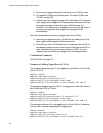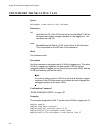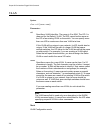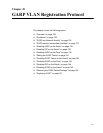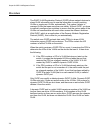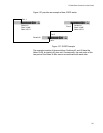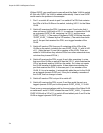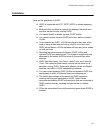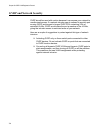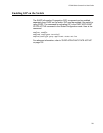
Chapter 49: GARP VLAN Registration Protocol
732
Overview
The GARP VLAN Registration Protocol (GVRP) allows network devices to
share VLAN information and to use the information to modify existing
VLANs or create new VLANs, automatically. This makes it easier to
manage VLANs that span more than one switch. Without GVRP, you have
to manually configure your switches to ensure that the various parts of the
VLANs can communicate with each other across the different switches.
With GVRP, which is an application of the Generic Attribute Registration
Protocol (GARP), this is done for you automatically.
The switch uses GVRP protocol data units (PDUs) to share VLAN
information among GVRP-active devices. The PDUs contain the VID
numbers of all the VLANs on the switch.
When the switch receives a GVRP PDU on a port, it examines the PDU to
determine the VIDs of the VLANs on the device that sent it. It then does
the following:
If the PDU contains a VID of a VLAN that does not exist on the
switch, it creates the designated VLAN and adds the port that
received the PDU as a tagged member of the VLAN. A VLAN
created by GVRP is called a dynamic GVRP VLAN.
If the PDU contains a VID of a VLAN that already exists on the
switch but the port is not a member of it, the switch adds the port
as a tagged member of the VLAN. A port that has been added by
GVRP to a static VLAN (that is a user-created VLAN) is called a
dynamic GVRP port.
Only GVRP can modify or delete dynamic GVRP VLANs. Dynamic GVRP
VLANs exist only if there are active nodes in the VLANs. If all nodes of a
dynamic GVRP VLAN are shut down, and there are no active links, GVRP
deletes it from the switch.
A dynamic GVRP port in a static VLAN remains a member of the VLAN as
long as there are active VLAN members. If all members of the VLAN
become inactive or there are no active links, GVRP removes the dynamic
port from the VLAN, but does not delete the VLAN if the VLAN is a static
VLAN.



